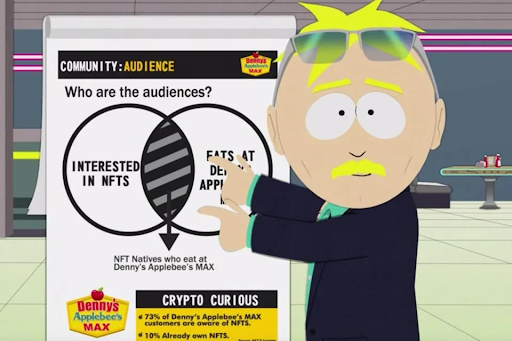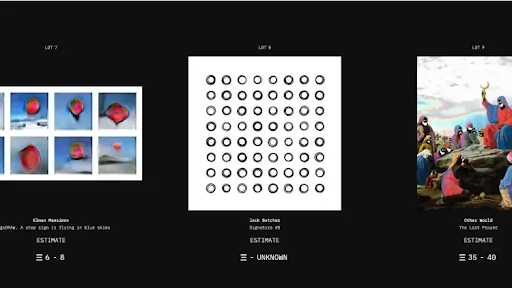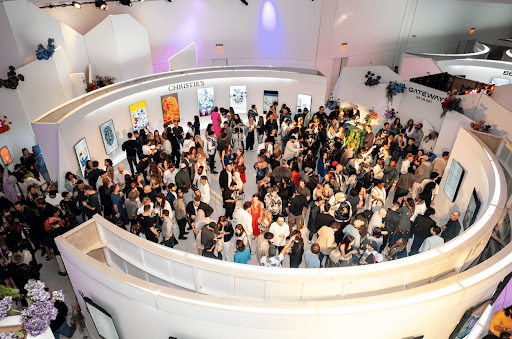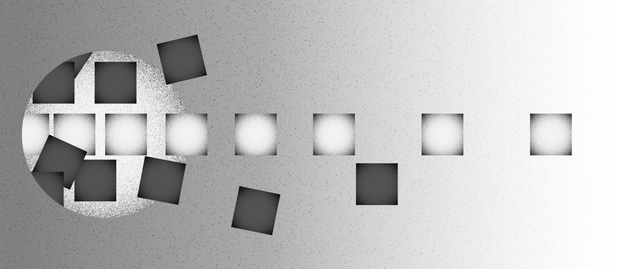
Crypto Art Is Back Despite All Odds
In the last two years, crypto art has faced many challenges and skepticism. As a result, its popularity among the general public, and more specifically, art enthusiasts, has declined, leading some to wonder whether it’s the end of these assets. Nevertheless, despite all the hardships and news about lost value, the crypto art movement is experiencing a powerful resurgence. Defying all odds and capturing the attention of artists, collectors, and enthusiasts alike, it is now bursting with new activities like Christie's New Wave: Miami Edit — an event that celebrates the resurgence of crypto art and stands as a testament to its resilience.
Let’s explore what has exactly caused the audience to lose interest, how the New Wave debunks the notion of irreversible demise in crypto art, and whether Christie’s event is a one-time gig or a symbol of a true return. Join us on this journey and see how crypto art tries to win its fame and audience back against all odds. Maybe it’s exactly the right time for you to buy a piece, whose price will skyrocket in the near future.

Why Crypto Art Was in Decline
Crypto art, also known as non-fungible tokens (NFTs), was initially popular but has faced challenges and limitations that have discouraged many from purchasing it in recent years. These challenges need to be addressed for NFTs to achieve sustained success. Firstly, there are four main issues that make some individuals view NFTs as a thing of the past.
1. Ambiguity in Regulations
The current regulatory landscape surrounding NFTs is plagued by ambiguity and inconsistency, leaving creators, consumers, and regulators in a state of uncertainty. Without clear and universal standards in place, determining the legal implications, rights, and responsibilities connected to NFTs and their ownership becomes a complex task. This jumbled patchwork of regulations presents a significant barrier to creating a comprehensive framework that adequately safeguards the interests of all involved parties.
2. Concerns about Quality and Originality
The NFT market is flooded with a range of different artworks, prompting concerns about the value and desirability of these digital assets. Without a widely accepted benchmark for verifying the genuineness, history, and caliber of NFTs, there is a heightened risk of counterfeiting, theft, and tampering. The influx of hastily produced, subpar, or duplicated NFTs dilutes the exclusivity and individuality that form the foundation of these tokens' worth. This trend also undermines consumer and collector confidence as doubts arise about the artistic merit and cultural impact of NFTs.
3. Volatility and Speculation in the Market
The world of NFTs is a constantly shifting landscape, vulnerable to sudden changes and outside forces. This makes it challenging for NFTs to maintain value and gain widespread acceptance in the long run. Fueled by excitement, FOMO, and celebrity backing, artificial demand drives NFT prices beyond their true worth. Unfortunately, this leads to market crashes, bubbles, and scams. Such instability deters those looking for stable and lasting returns on their investments from participating in the NFT market.
4. Limited Accessibility and Usability
NFTs can be intimidating to the average person due to their technical complexities. These include the need for technical expertise, specific crypto wallets, and sufficient cryptocurrency funds, creating obstacles to accessibility and usability. Additionally, the variety of platforms and marketplaces adds to the difficulty, each with its own unique features, functions, and interfaces. Consequently, many individuals who are unfamiliar with the underlying concepts and technologies struggle to fully embrace NFTs.
Christie’s Miami Edit or New Wave in Crypto Art
The “Next Wave: Miami Edit” art auction has successfully concluded after a week-long run from December 5th to 12th. Divided into two parts, the week-long display featured a diverse range of artists and their unique digital art creations that highlighted the growing influence of the crypto genre in the contemporary art scene.
On the third and fourth days of the physical exhibition, art enthusiasts could personally examine all 24 remarkable digital masterpieces up close before placing their bids. Subsequently, the auction was hosted on Christie's official website, offering all 24 digital artworks in the form of NFTs. Ultimately, the event generated over $230,000, successfully selling fifteen artworks, including pieces by renowned artists such as Beeple, Keith Haring, and Tyler Hobbs. And this does not include potential secondary sales!

Here are the Top 5 artworks that were successfully sold during the event:
- The Thought of You (Ryan Koopmans) — $44,064 (20 ETH)
- alignDRAW, A Stop Sign is Flying in Blue Skies (Elman Mansimov) — $33,048 (15 ETH)
- Bali Moon (GMUNK) — $31,351 (14.23 ETH)
- Mother of Menelik (Yatreda) — $27,540 (12.5 ETH)
- Signature #0 (Jack Butcher) — $21,349 (9.69 ETH)
As digital art continues to make its mark, Christie's Miami Edit serves as a prime example of this trend. It not only fuses both real-world and online exhibitions to promote the value of digital art in the traditional art space but also contributes to the more diverse art world, where different genres and mediums enrich the global art scene.
Why Such Events Matter
Events dedicated to crypto art and NFTs play a crucial role as they provide a platform for resolving existing issues and guiding the community toward more sustainable approaches and economies. During these events, top experts, collectors, and creators can discuss various aspects, including the importance of a practical regulatory framework, the value of quality and originality, and the significance of genuine artistic expression. Additionally, by bringing together the entire community, these events help stabilize the market, promote transparency, and manage volatility through constructive collaboration. Finally, NFT events will help newcomers learn more about the field, technologies, and other aspects of crypto art.

Conclusion
Events like Next Wave have the potential to significantly impact the future of crypto art, leading it towards a more stable and prosperous direction. By addressing pertinent issues, these gatherings drive positive change within the NFT ecosystem, push boundaries, foster partnerships, and promote knowledge. Looking ahead to the year 2024, a plethora of captivating events are set to catalyze the evolution of crypto art even further.
Related articles





